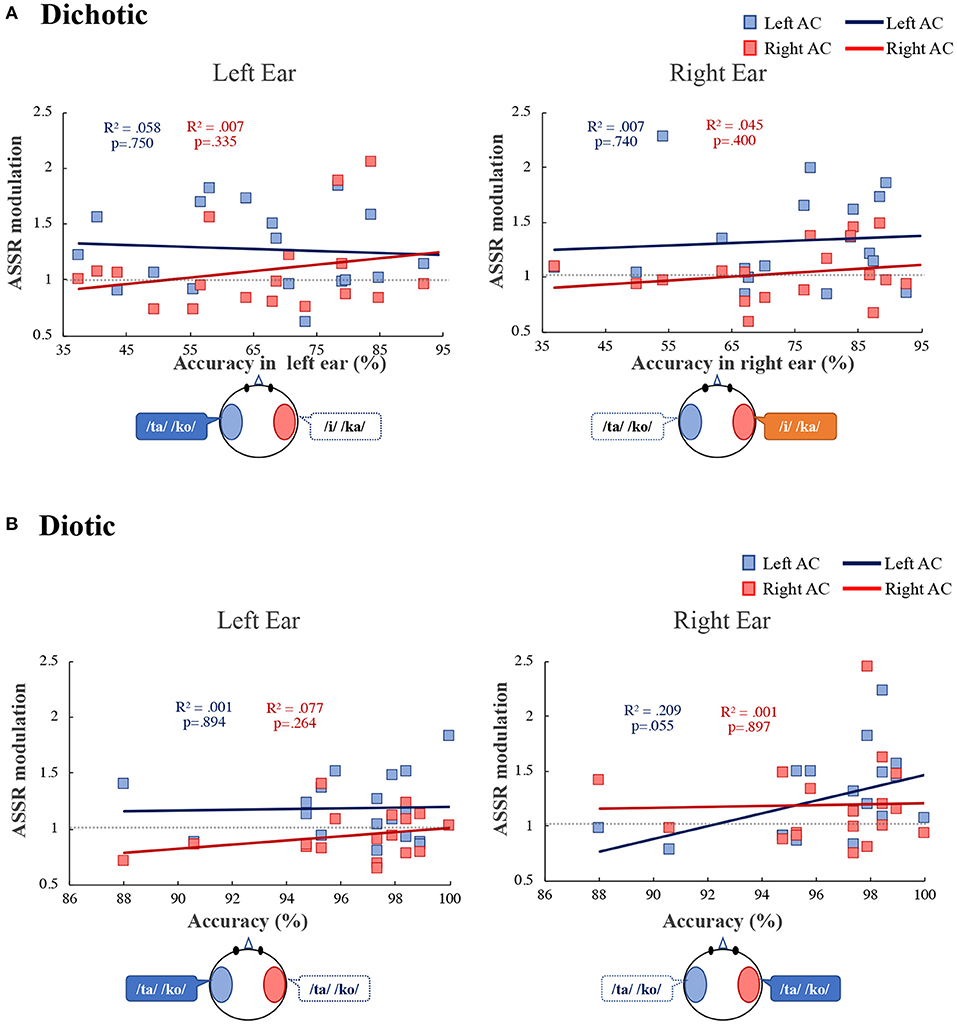

The modulation frequency of 40 Hz was infrequently changed to 20 Hz in both ears and listeners attended for the duration of a recording block of 7 minutes either to the left or right ear stimuli and responded to the targets in the attended ear with a right hand button press. The stimuli were amplitude modulated (AM) tones of 600 ms duration presented in random to the left and right ear with stimulus onset asynchrony of 900-1100 ms. Twelve healthy hearing university students participated in the study and listened to streams of dichotic sounds during whole head magnetoencephalographic (MEG) recordings.

Conclusões: Os resultado encontrados sugerem uma possível função inibitória do hemisfério direito modulando a exp.Rotman Research Institute, Baycrest Centre, Toronto, ON M6A 2E1, CanadaĪmplitude modulated, Attention switching, Dichotic listening, Driving stimulus, Modulation frequencies, Neural process, Onset asynchrony, Selective attention, Temporal dynamics, Time course, University students AbstractĪ study was conducted to construct the time courses of cortical source activity and investigate the neural processes driving stimulus selection during dichotic listening. Um aumento nos intervalos de tempo das associações foi observado no grupo não lesional direito em relação ao grupo não-lesional esquerdo. Resultados: Redução nos intervalos de tempo entre as associações encontrada no grupo lesional direito foi comparada aos grupos lesional esquerdo, não-lesional direito e controle.
DICHOTIC LISTENING SOFTWARE
As respostas individuais foram registradas por meio de um teclado de computador (PC) e os intervalos de tempo (pausas) entre cada palavra-frase foram processadas por um software especialmente desenvolvido. In the late 1960s and early 1970s Donald Shankweiler and Michael Studdert-Kennedy of Haskins Laboratories used. Os pacientes foram orientados para dizer qualquer pensamento que viesse as suas mentes, sem qualquer tipo de censura. Dichotic listening therapy sessions at Auditory Processing Center are individualized based on each child’s profile. A associação livre de idéias foi usada como método para estabelecer o fluxo do pensamento, partindo de uma palavra-frase (nome do indivíduo) que devia ser seguida por palavras-frase espontâneas e consecutivas. Método: foram estudados 39 pacientes com crises epilépticas parciais e 24 voluntários (grupo controle).
DICHOTIC LISTENING FREE
Considering the hypothesis of the inter-hemispheric inhibition by the right hemisphere on left hemisphere, we admit that in epileptic patients with right hemispheric lesion there is an attenuation of the inter-hemispheric inhibition and an increase in thought flow, whereas in patients without a lesion but a paroxysmal epileptic activity in right temporal lobe there is an exacerbation of this inhibitory function and consequent reduction in the thought flow.KEY WORDS: partial epilepsy, free association, computerized psychological test, thought flow.Įfeito de descargas epilépticas lateralizadas no fluxo do pensamentoRESUMO -Objetivo: Foram estudadas as pausas na expressão verbal do pensamento em pacientes com epilepsia parcial a fim de estabelecer uma melhor compreensão das influências interhemisféricas cerebrais. Conclusions: We suggest a possible inhibitory inter-hemispheric function of the right hemisphere modulating verbal expression of the thought flow. An increase of associative time intervals was observed in the right non-lesional group compared to left non-lesional group. Results: Time intervals reduction among associations in right lesional group were compared to left lesional, right non-lesional and control groups.
DICHOTIC LISTENING PC
Subject responses were recorded through a PC keyboard and time intervals (pauses) between each word-phrase were processed by a software developed for this purpose. Patients were instructed to say any thought that came to their minds without any kind of censoring. Free association of ideas was used as a method to stablish the thought flow, starting with a stimulus word (subject name) that must be followed by spontaneous and consecutive word-phrase. Method: We studied thirty nine patients with partial epileptic seizures and twenty four volunteers (control group). attention in the literature dichotic listening task filter model overload of. Purpose: Pauses in verbal expression of thought flow in patients with partial epilepsy was studied in order to achieve a best comprehension of brain interhemispheric influences. This is a summary I put together to help me revise for the neuroscience exam.


 0 kommentar(er)
0 kommentar(er)
